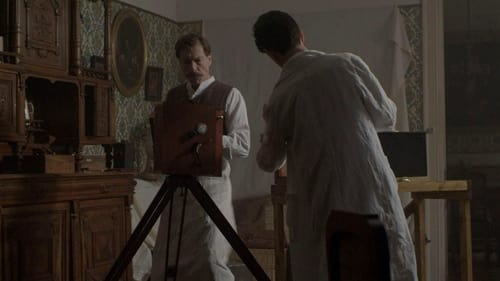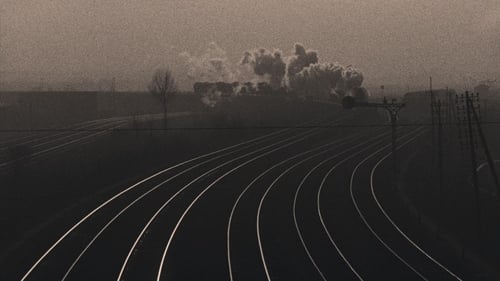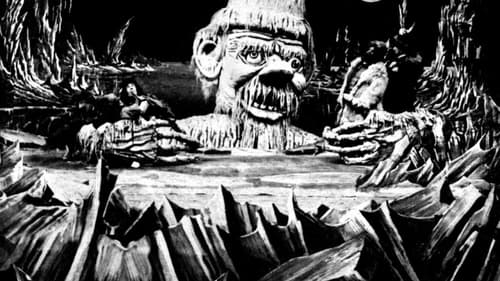
(Archive footage)
The extraordinary life of cinema pioneer Segundo de Chomón.

(Archive footage)

Self (archive footage)
Nicole Védrèss' chronicle of Paris from 1900 to 1914 is brought to life through the use of original material, all authentic, secured from more then 700 films belonging to public and private collections. A few of the celebrities of the time shown are Enrico Caruso, Sarah Bernhardt, and Maurice Chevalier.

Producer
Sisif, a railwayman, saves a young girl named Norma orphaned by a train crash and raises her as his own daughter alongside his son, Elie. As she becomes an adult, Sisif grapples with whether to tell Norma the truth about her parentage.

Producer
The Thames, although insignificant compared to the rivers of the continent, has its own charm that painters and poets like Turner, Bonington, Eugène Delacroix, Whistler and Seymour have tried to render on paper or on canvas. In this film no grandiose scenes, just a river of silver flowing placidly between low banks, covered with trees. Here and there we pass through delightful little towns until we get to Windsor and dock in the shade of its famous castle.

Producer
Fernand Pradier (Gabriel Signoret) is an honest merchant and a simple person at heart who tries to make her daughter Germaine (Gabrielle Robinne) happy. She is engaged to a rich banker St-Bris (René Alexandre). However, the fiance once belonged to a criminal organization and, despite his efforts of rehabilitation, one of his ancient accomplices makes their engagement impossible. Eventually imprisoned, she escapes with the help of a beautiful typist (Stacia Napierkowska)...

Producer
Georges Méliès's first attempt at Cinderella was in 1899. That film was extraordinary then for having multiple scenes and a semblance of a narrative; additionally, the use of dissolves as transitions in it influenced other filmmakers for years to do the same. Méliès was the cinema world's preeminent leader then. By 1912, however, that was no longer the case; frankly, as evidenced by this feature, his style had become dated. Moreover, Méliès had begun to adopt techniques from other filmmakers, such as direct cuts instead of dissolves, and there's even a match on action shot during the slipper trying-on scene.

Producer
A science fantasy film that deals with an extraordinary race to the north pole by rival parties of balloonists. Based on the novel "The Adventures of Captain Hatteras" by Jules Verne.

Producer
Early short film adapted from the Bible (Judges 4-5)

Producer
The carrot caterpillar hides among and feeds on the leafy foliage in carrot fields. A man demonstrates how difficult it is to detect and remove them from the carrot plants. They propel themselves with their six feet and twelve suction cups. To ward off enemies, they display two horns which secrete a malodorous liquid. Before the chrysalis stage of their development, they attach themselves to a surface and two days later burst from their shell. After spending the winter as a chrysalis, they emerge as swallowtail butterflies. Once they have bathed their wings in dew and dried off, they are ready to fly. (Library of Congress)

Himself
Recommended by a friend of the Ambigu Theatre, Max is summoned to Joinville studios. His first role is that of a husband who comes home late.

Producer
Jean Comandon, pioneer of microcinematography, recorded this time-lapse film in c. 1910, using a ultramicroscope. The film show living spiral shaped syphilis bacteria moving among red blood cells of frog. Notice the back-and-forth movement, characterizing the disease-causing form. (Wikipedia)

Producer
Native British birds, from common gulls and cuckoos to the rare Richardson's Skua, are filmed in their natural habitat.

Producer

Director
This two-shot newsreel fragment surveys the scene at a Votes for Women protest on Trafalgar Square in the summer of 1910, when suffragists of the National Union of Women's Suffrage Societies presented petitions signed by supportive menfolk of Britain's towns and cities. (Edward Anderson, Make More Noise! Suffragettes in Silent Film)

Director
This was one of the earliest mass marches organised by the suffrage movement, and up to 15,000 women marched from the Embankment to the Albert Hall to hear speeches from Christabel Pankhurst and other suffragette leaders (Ros Cranston, Make More Noise! Suffragettes in Silent Film).

Producer
A magician and some assistants put up a series of posters of music hall acts in a frame. Then the magician brings each poster to life.

Director
A train arrives at the station.

Director
A train ride with a view from the back of the train.











